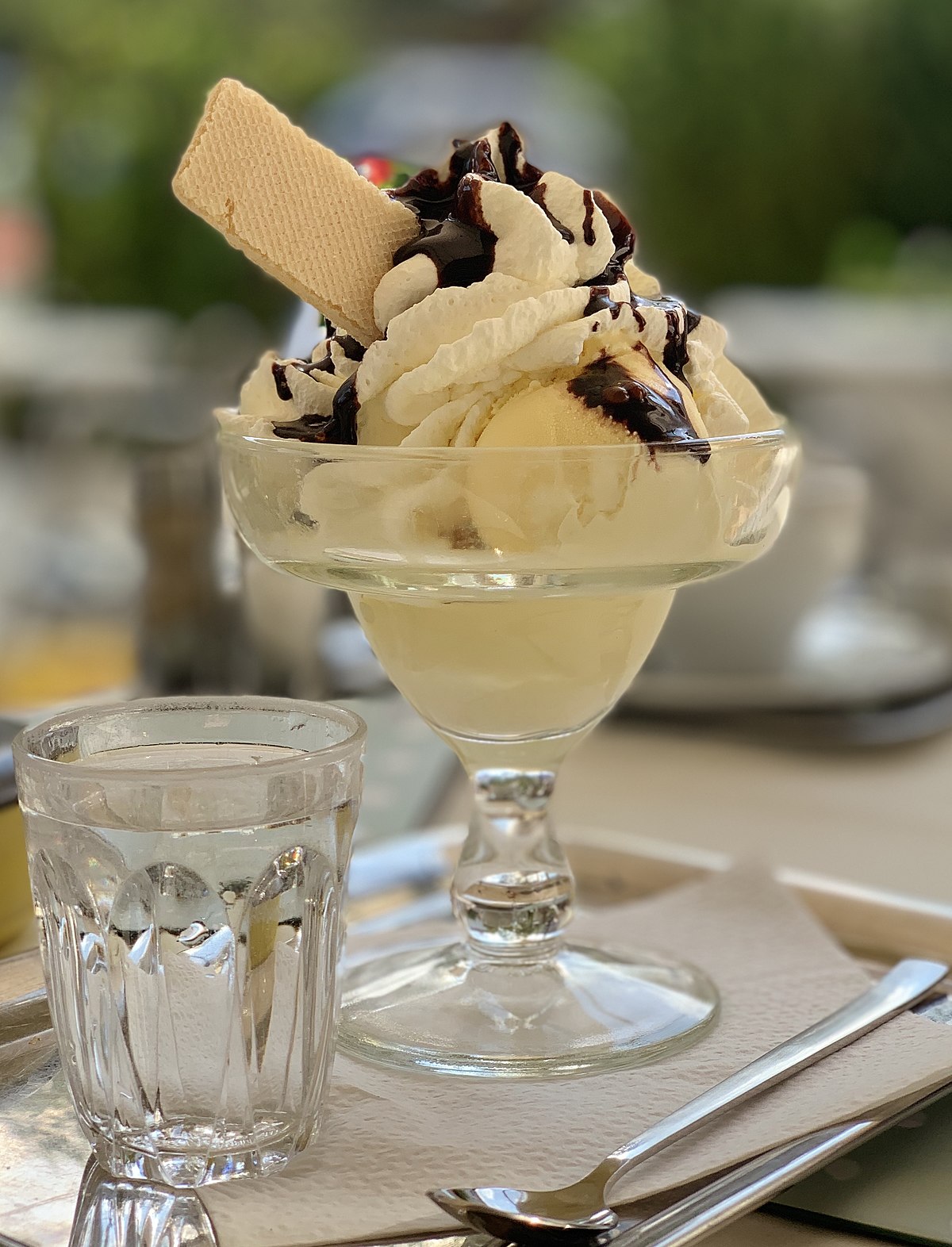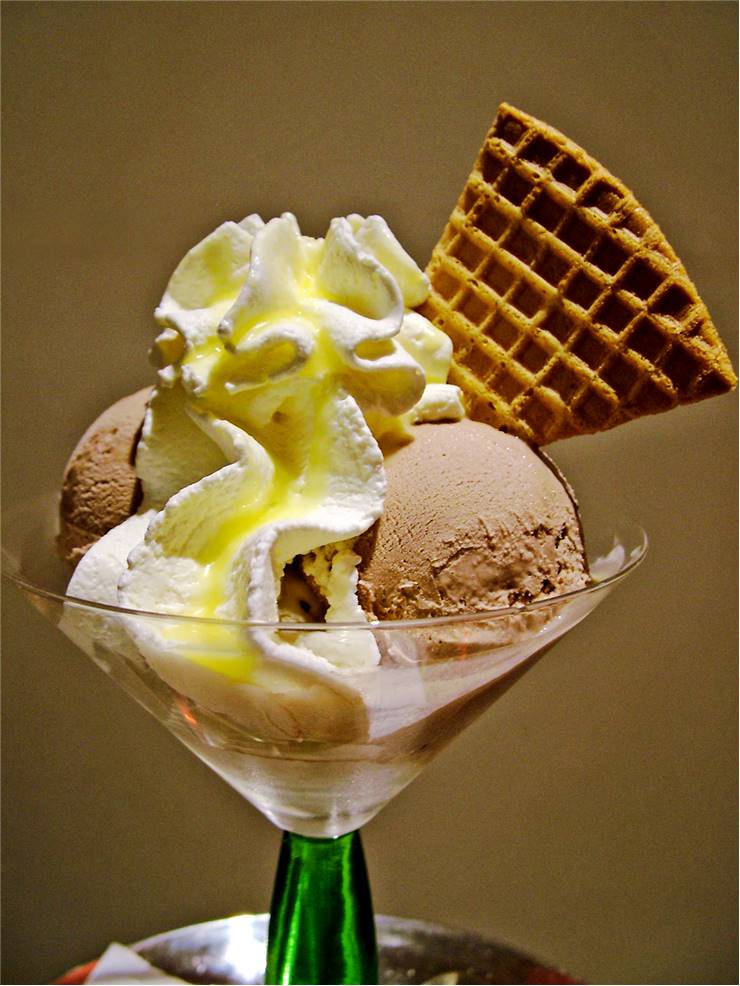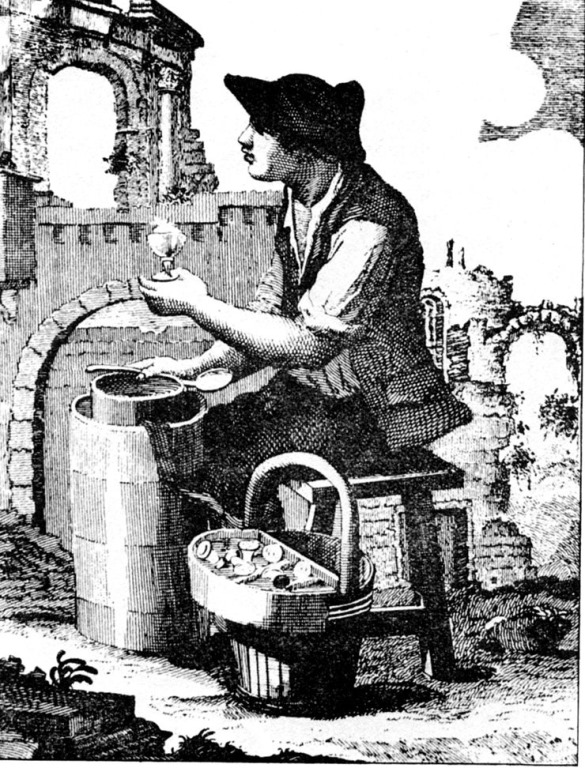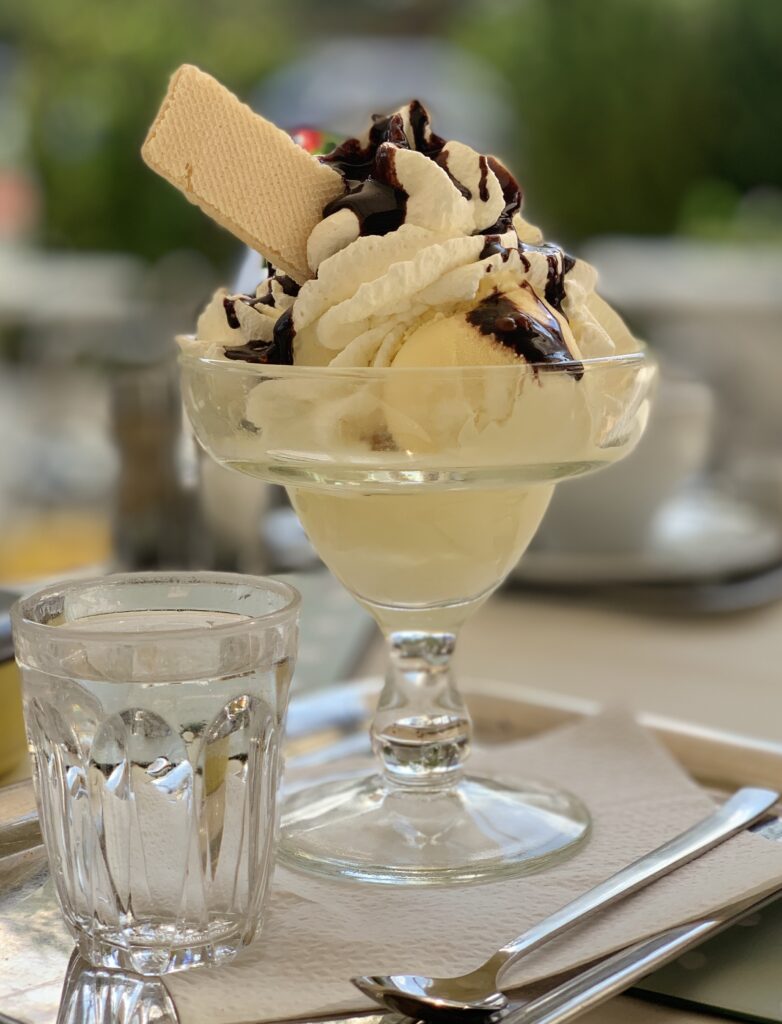Introduction

Ice cream has become a beloved treat enjoyed by people all over the world, providing a refreshing and indulgent experience on hot summer days. Tracing the origins of ice cream not only satisfies curiosity but also reveals the rich history and cultural significance behind this frozen delight. From ancient China and Persia to the evolution of ice cream in Europe and its arrival in America, the journey of ice cream showcases the ingenuity and creativity of humans throughout history. By understanding the roots of ice cream, we can appreciate the innovations and advancements that have led to the diverse range of flavors and textures enjoyed today.
The Popularity Of Ice Cream Throughout History.
Ice cream has enjoyed enduring popularity throughout history, captivating the taste buds of people across different cultures and generations. Its refreshing and indulgent qualities have made it a beloved treat, particularly during hot summer days. From ancient civilizations to the modern era, the allure of ice cream has remained constant. Whether enjoyed by emperors in ancient Persia, aristocrats in Renaissance Italy, or everyday people in America, ice cream has consistently brought joy and delight. Its popularity has only grown with time, with a plethora of flavors and variations to satisfy the diverse preferences of ice cream enthusiasts.
The Significance Of Tracing The Origins Of Ice Cream.
Tracing the origins of ice cream holds great significance in understanding the cultural and culinary heritage of different societies. By uncovering the historical roots of this beloved frozen treat, we gain insights into the traditions, innovations, and cultural exchanges that have shaped its evolution. It allows us to appreciate the contributions of ancient civilizations to the development of ice cream and acknowledge the inventiveness of individuals throughout history. Furthermore, tracing the origins of ice cream fosters a deeper appreciation for its enduring popularity and helps us acknowledge and honor the diverse cultures that have contributed to its creation and enjoyment.
Ancient Beginnings Of Frozen Treats

In ancient China, the earliest known forms of ice cream emerged around 200 BC. The Chinese would mix snow or ice with sweetened milk, creating a frozen treat that resembled what we now know as ice cream. This creamy delight was enjoyed by emperors and nobles during the Tang Dynasty. In ancient Persia, flavored ice became popular during the Achaemenid Empire around 500 BC. Crushed and sweetened ice was mixed with various fruits and flavors, paving the way for the development of more sophisticated frozen desserts in the years to come.
Early Forms Of Ice Cream In Ancient China.
In ancient China, the earliest known forms of ice cream emerged around 200 BC. The Chinese would mix snow or ice with sweetened milk, creating a frozen treat that resembled what we now know as ice cream. This creamy delight was enjoyed by emperors and nobles during the Tang Dynasty. The technique of making ice cream gradually spread to other parts of the world, influencing the development of frozen desserts in different cultures. The ancient Chinese were pioneers in the creation of frozen treats, laying the foundation for the evolution of ice cream throughout history.
The Innovation Of Flavored Ice In Ancient Persia.
In ancient Persia, around 500 BC, a fascinating innovation in frozen treats emerged. The people of the Persian Empire started making flavored ice by pouring grape juice concentrate over snow. This delightful combination provided a refreshing relief during the scorching summers. The Persians continued to experiment with various flavors and created an ice cream recipe for their royal families. This recipe included iced rose water, vermicelli, saffron, fruits, and other sweet flavors. The innovation of flavored ice in ancient Persia laid the foundation for the development of ice cream as we know it today.
Evolution Of Ice Cream In Europe

Ice cream continued to evolve and gain popularity in Europe during the Renaissance period. In Italy, frozen desserts were introduced and enjoyed by the aristocracy. The Medici family played a significant role in popularizing ice cream, as Catherine de Medici brought her love for frozen treats to France when she married King Henry II. From there, ice cream spread across Europe, with variations and unique flavors emerging in different countries. The 17th and 18th centuries saw a rise in ice cream consumption, with ice cream becoming a fashionable and indulgent treat for the elite.
Introduction Of Frozen Desserts In Renaissance Italy.
During the Renaissance period in Italy, frozen desserts were introduced and enjoyed by the aristocracy. It is believed that ice cream was invented in Italy by architect Bernardo Buontalenti at the court of Catherine de’ Medici in Florence. Catherine de’ Medici, who later became the queen of France, brought her love for frozen treats with her, introducing them to the French court. This marked the spread of ice cream across Europe, with variations and unique flavors emerging in different countries. The Medici family played a significant role in popularizing ice cream, making it a fashionable and indulgent treat for the elite.
The Spread Of Ice Cream Across Europe During The 17th And 18th Centuries.
During the 17th and 18th centuries, the popularity of ice cream continued to grow and spread across Europe. After being introduced in Italy, the trend quickly caught on in other countries. France, in particular, embraced ice cream, thanks to Catherine de’ Medici’s influence. The French court popularized the frozen treat, leading to its adoption by the upper classes in other European nations. As trade routes expanded and cultural exchanges took place, ice cream recipes and techniques made their way to countries like England, Germany, and Russia. It became a coveted delicacy among the elite and a symbol of luxury and sophistication.
Ice Cream In America

Ice cream made its way to America thanks to the influence of European settlers. In the late 18th century, ice cream was a rare delicacy enjoyed by the elite. However, in the 19th century, the invention of ice cream machines and the availability of ice made it more accessible to the general public. Ice cream parlors became popular gathering places, and the introduction of new flavors and toppings added to its appeal. American inventors like Nancy Johnson and Jacob Fussell played significant roles in improving ice cream production techniques, leading to the growth of the industry.
The Arrival Of Ice Cream In America.
Ice cream made its way to America thanks to the influence of European settlers. In the late 18th century, ice cream was a rare delicacy enjoyed by the elite. However, in the 19th century, the invention of ice cream machines and the availability of ice made it more accessible to the general public. Ice cream parlors became popular gathering places, and the introduction of new flavors and toppings added to its appeal. American inventors like Nancy Johnson and Jacob Fussell played significant roles in improving ice cream production techniques, leading to the growth of the industry.
The Role Of American Inventors In Improving Ice Cream Production Techniques.
American inventors played a significant role in enhancing the production techniques of ice cream. Innovators such as Nancy Johnson and Jacob Fussell made crucial contributions to the ice cream industry. Johnson invented the hand-cranked ice cream freezer in 1843, which made the process more efficient and accessible for home use. Fussell, a Baltimore milk dealer, pioneered the commercial production of ice cream in 1851. These inventors, along with others, introduced advancements like mechanical refrigeration and new freezing processes, revolutionizing the way ice cream was made and increasing its availability to a wider audience.
Industrialization And Commercialization

Industrialization and commercialization played a significant role in shaping the ice cream industry. With the advent of the industrial revolution, mechanized ice cream production became possible. Electric freezers were introduced, providing continuous refrigeration for mass-produced ice cream products. This led to a significant decrease in the price of ice cream, making it more accessible to the general population. Ice cream parlors emerged as popular establishments, providing a space for people to enjoy this frozen treat. Mass production methods further promoted the commercialization of ice cream, turning it into a widely consumed and beloved dessert.
The Development Of Mechanized Ice Cream Production.
The development of mechanized ice cream production was a significant milestone in the ice cream industry. With the advent of the industrial revolution, new technologies and machinery were introduced that revolutionized the process of making ice cream. Innovations such as steam power, mechanical refrigeration, and electric power transformed the industry, making it possible to produce ice cream on a much larger scale. The introduction of new freezing processes and equipment further improved efficiency and quality. These advancements in mechanized production techniques paved the way for the mass production and commercialization of ice cream, making it more accessible to the general population.
The Rise Of Ice Cream Parlors And Mass Production.
The rise of ice cream parlors and mass production played a significant role in making ice cream more accessible to the general population. As the demand for ice cream grew, entrepreneurs saw the opportunity to open dedicated establishments where people could enjoy this delightful frozen treat. Ice cream parlors began popping up in urban areas, offering a variety of flavors and toppings to cater to different tastes. With the advancements in mechanized ice cream production, mass production became possible, allowing ice cream to be produced in larger quantities and distributed to a wider market. This led to the proliferation of ice cream shops and the establishment of ice cream as a popular dessert choice for people of all backgrounds.
Conclusion

In conclusion, tracing the origins of ice cream provides valuable insights into the culinary history and cultural significance of this beloved frozen treat. From its humble beginnings in ancient China and Persia to its evolution in Europe and eventual arrival in America, ice cream has captured the hearts and taste buds of people around the world. The development of mechanized production techniques and the rise of ice cream parlors have made this indulgence more accessible than ever before. The rich history and continued evolution of ice cream highlight its enduring popularity and the delight it brings to people of all ages.
Uncovering The History And Legacy Of Ice Cream.
The history and legacy of ice cream are fascinating to explore. Tracing its origins allows us to understand the cultural significance of this frozen treat. From its early beginnings in ancient China and Persia to its evolution in Europe and arrival in America, ice cream has been enjoyed by people for centuries. Today, it remains a beloved dessert all around the world. The continued enjoyment and evolution of ice cream highlight its enduring popularity and the delight it brings to people of all ages. Its legacy as a symbol of indulgence and pleasure is firmly established.
The Continued Enjoyment And Evolution Of This Delightful Frozen Treat.
Ice cream’s journey throughout history continues to captivate and delight people of all ages. Its evolution has seen countless variations and flavors, catering to evolving tastes and preferences. From traditional classics like vanilla and chocolate to innovative combinations like cookie dough or matcha, there is an ice cream flavor for everyone. Moreover, advancements in technology have allowed for the creation of new textures and forms, such as gelato or soft-serve. Whether enjoyed in a cone or a cup, ice cream remains a beloved dessert, bringing joy and satisfaction to people around the world. Its legacy as a symbol of indulgence and pleasure is solidified through the continued enjoyment and innovation of this delightful frozen treat.
Frequently Asked Questions: The Discovery of Ice Cream
Q: Who discovered ice cream?
A: The exact origins of ice cream are still uncertain, as it’s believed to have been discovered independently by various ancient civilizations. However, the earliest records of a dessert resembling ice cream date back to ancient China, Persia, and India.
Q: How was ice cream discovered?
A: While the exact details remain unclear, historical evidence suggests that people in ancient civilizations stumbled upon the concept of ice cream through a fortunate combination of ice and flavorings. Initially, ice cream was likely made by mixing snow or ice with honey, fruits, or various sweeteners.
Q: Did the ancient Chinese invent ice cream?
A: While it’s difficult to determine the exact inventors of ice cream, some evidence suggests that the ancient Chinese deserves credit for its early development. Historical records indicate that they enjoyed a frozen mixture of milk and rice around 200 BC, which closely resembled what we know as ice cream today.
Q: Did the Persians contribute to the discovery of ice cream?
A: Yes, the Persians (modern-day Iran) also played a significant role in the development of ice cream. Around 500 BC, Persian royalty began to combine fruit juices with snow or ice, creating a refreshing dessert known as “sharbats.” This may be considered an early precursor to the frozen treats we enjoy today.
Q: How did ice cream spread throughout the world?
A: Ice cream traveled through various trade routes and with the movement of armies, introducing it to different parts of the world. The Arabs, specifically during the expansion of the Islamic Empire, are believed to have brought early ice cream recipes to the Mediterranean countries and parts of Europe.
Q: When did ice cream gain popularity in Europe?
A: Ice cream became popular in Europe during the 16th century. Catherine de’ Medici, an Italian noblewoman and queen consort of France, is said to have introduced frozen desserts to the French court. The French then developed their unique style of ice cream, which later spread throughout Europe.
Q: When was ice cream introduced to America?
A: Ice cream made its way to America with the colonists. The first official record documenting the presence of ice cream in the American colonies dates back to 1744. However, it wasn’t until the 19th century when ice cream became widely available and affordable to the general public.
Q: Who is credited with making ice cream popular in the United States?
A: The development and popularization of ice cream in the United States is credited to several individuals. Among them are Thomas Jefferson, who was known to serve ice cream at his home in Monticello, and Nancy Johnson, who is credited with inventing the hand-cranked ice cream freezer in 1846.
Q: How has ice cream evolved over time?
A: Ice cream has come a long way since its humble beginnings. With advancements in technology, the invention of modern refrigeration techniques, and an ever-increasing array of ingredients, ice cream has evolved into a beloved and versatile treat. Today, we can enjoy various flavors, textures, and even non-dairy alternatives.

Soo Good Snack Bar is an upscale snack shop located at 1309 Hermosa Ave. in Hermosa Beach, CA. This family-owned business is the newest addition to the community of Hermosa, and our goal is to create a fun and inviting place where families can enjoy delicious snack foods that fit the beach lifestyle. Check us out today and help yourself to happiness.
